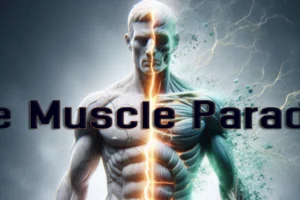The Persistence of Outdated Medical Knowledge
The medical field is one of constant evolution, where new discoveries and innovations found by researchers continually reshape our understanding of health and disease. However, despite the rapid advancements in knowledge, outdated medical knowledge and inaccurate information typically persist within medical education and practice for many years. Perhaps this is evidenced by things like the repeated recommendations to consume foods that have been found to be less-than-ideal for most people.
Something has to change! However, we have to know what we are up against if we want to course-correct. This article explains this phenomenon through something called Epistemic Rigidity, a theory that integrates various biases and phenomena to explain why people struggle to update their knowledge and embrace new information. So, I’ll explain how Epistemic Rigidity can manifest in medicine, I’ll provide a case study that exemplifies the phenomenon, and then I’ll provide a few ideas on how we might be able to mitigate or even overcome it.
The Epistemic Rigidity in Medicine
The Einstellung Effect in Medical Training
Medical students are trained through a rigorous curriculum designed to provide them with foundational knowledge and clinical skills. However, the Einstellung effect can hinder their ability to adopt new methods or treatments. For instance, students and residents might default to familiar diagnostic procedures and therapeutic approaches, even when new, more effective options are available. This cognitive rigidity is compounded by the hierarchical nature of medical training, where deference to the authority of senior physicians can further entrench outdated practices.
The Einstein Effect and Authority in Medicine
The Einstein effect plays a significant role in medical education. Statements and teachings from respected professors and experienced clinicians are often accepted without question. This uncritical acceptance can perpetuate inaccuracies, as students and young doctors assume that the information conveyed by their mentors is the ultimate truth. Consequently, the propagation of outdated or incorrect medical knowledge can occur, especially if the mentors themselves are not up-to-date with the latest advancements.
The Dunning-Kruger Effect and Medical Novices
The Dunning-Kruger effect is particularly evident among medical students and newly graduated doctors. Their initial training provides them with a substantial body of knowledge, which can lead to overconfidence in their understanding and abilities. This overconfidence may make them less likely to seek out new information or question existing practices. It is only through experience and further education that they begin to recognize the limitations of their initial training and the vastness of medical knowledge.
Anchoring Bias and Early Medical Education
Anchoring bias influences medical professionals from the outset of their education. The first information they receive about a disease or treatment can become deeply ingrained, shaping their future understanding and decisions. For example, if medical students learn about a specific treatment protocol early in their training, they may continue to favor this approach, even when newer, more effective treatments become available. This initial anchor can create a significant barrier to the adoption of updated medical practices.
Additional Cognitive and Social Factors in Medical Knowledge Persistence
Beyond the well-documented cognitive biases listed already, additional factors like confirmation bias, motivated reasoning, cognitive dissonance, and heuristics further entrench outdated medical knowledge. For example, confirmation bias causes medical professionals to favor information that aligns with their pre-existing beliefs, leading them to discount or ignore new evidence that contradicts established practices. Motivated reasoning exacerbates this issue by allowing emotional and personal motivations to influence the interpretation of new data, reinforcing existing misconceptions.
Cognitive dissonance, the mental discomfort experienced when confronted with conflicting information, also plays a significant role. To alleviate this discomfort, medical practitioners may rationalize or dismiss new findings that challenge their current understanding. Heuristics, or mental shortcuts used for decision-making, contribute to this rigidity by simplifying complex medical information into familiar patterns, often at the expense of accuracy and innovation.
Holistically, these cognitive and social factors are known as Epistemic Rigidity, and it explains why some fail to adopt new, evidence-based medical knowledge. However, it also emphasizes the need for targeted strategies to overcome these barriers and promote continuous learning in the medical field. But before we explore how to overcome Epistemic Rigidity, I would like to provide you with a couple of examples that demonstrate how dangerous this phenomenon can be and how it can impede ideal outcomes.
Case Study #1: The Management of Sepsis
Let’s consider the condition of sepsis. Sepsis is a life-threatening condition caused by the body’s extreme response to an infection, leading to widespread inflammation, tissue damage, and organ failure. Sepsis requires prompt recognition and treatment, typically involving broad-spectrum antibiotics, fluid resuscitation, and sometimes vasopressors to maintain blood pressure. However, the management protocols for sepsis have evolved significantly in recent years. Unfortunately, many physicians are stuck in the old ways. For example, a common scenario in the management of sepsis involves the use of early goal-directed therapy (EGDT), which was once widely accepted but has since been refined with new evidence. So, for example:
- Einstellung Effect: A physician may continue to follow the traditional EGDT protocol, administering large volumes of intravenous fluids, even though recent studies have shown that a more balanced approach to fluid management can improve outcomes.
- Einstein Effect: Medical residents and students may default to EGDT as taught by senior clinicians, assuming it is the best practice without questioning its current validity.
- Dunning-Kruger Effect: A newly graduated doctor may confidently apply EGDT principles, unaware of the latest research advocating for more tailored fluid management and early use of vasopressors.
- Anchoring Bias: The strong emphasis on EGDT during early training can create a lasting preference for this approach, making it difficult for healthcare providers to adopt new guidelines.
- Additional Factors: Confirmation bias, motivated reasoning, and cognitive dissonance can further entrench these outdated practices, as clinicians selectively attend to information that supports their existing views and downplays conflicting evidence.
Case Study #2: Stretching Before Workouts
Let’s consider the practice of static stretching before workouts. Despite recent research suggesting that static stretching may not be beneficial and could even be detrimental before exercise, many fitness professionals and athletes continue to advocate for it due to Epistemic Rigidity. Here’s how this issue can manifest in a practice setting:
- Einstellung Effect: Fitness professionals and athletes who have long practiced and taught static stretching before workouts continue to do so out of habit despite new evidence suggesting alternative warm-up methods might be more effective.
- Einstein Effect: Authoritative fitness organizations and respected trainers have historically promoted static stretching as essential for injury prevention. This has led to widespread acceptance of this practice without critical evaluation of newer research challenging its efficacy.
- Dunning-Kruger Effect: Novice trainers and athletes, confident in their basic understanding of fitness principles, may overestimate the benefits of static stretching and resist adopting new approaches that contradict their initial training.
- Anchoring Bias: Early education in sports science and physical education often emphasizes the importance of stretching before exercise. This early exposure creates a lasting cognitive anchor, making it difficult for individuals to shift their beliefs in light of new evidence.
- Additional Factors: Confirmation bias, motivated reasoning, and cognitive dissonance cause trainers and athletes to favor information that supports their belief in static stretching, ignoring studies that highlight its potential drawbacks.
Case Study #3: Chronic Lyme Disease
Consider the controversy surrounding chronic Lyme disease, a disease caused by the highly patented Borrelia burgdorferi. While acute Lyme disease is well-recognized and typically treated with antibiotics, the concept of chronic Lyme disease, where symptoms persist long after initial treatment, remains disputed. Despite clear evidence of persistent symptoms and evidence that Borrelia can survive within host macrophages, likely contributing to chronic or reoccurring Lyme disease, many physicians still dismiss these cases due to Epistemic Rigidity. Here’s how this issue can manifest in a practice setting:
- Einstellung Effect: Physicians often rely on the familiar diagnostic criteria of a bullseye rash and flu-like symptoms for Lyme disease. However, they may dismiss chronic symptoms such as fatigue, joint pain, and neurological issues if they do not fit this initial training, resulting in misdiagnosis or inadequate treatment.
- Einstein Effect: Respected medical authorities and established, albeit outdated, guidelines have historically denied the existence of chronic Lyme disease, emphasizing its acute presentation only. Medical professionals often defer to these authoritative sources, perpetuating the dismissal of chronic symptoms.
- Dunning-Kruger Effect: Newly trained physicians, confident in their foundational knowledge, may overlook or dismiss patient-reported symptoms that do not conform to their textbook understanding of Lyme disease. Their overconfidence can hinder them from seeking out new information or considering chronic Lyme disease as a viable diagnosis.
- Anchoring Bias: Early medical education often focuses on the acute phase of Lyme disease, creating a cognitive anchor that influences future diagnostic decisions. This bias leads to the persistent use of outdated diagnostic criteria, even as new research highlights the chronic nature of the disease for some patients.
- Additional Factors: Confirmation bias, motivated reasoning, and cognitive dissonance cause physicians to favor information aligning with their pre-existing beliefs, ignoring evidence and patient reports supporting chronic Lyme disease.
Of course, these are merely three of seemingly endless examples. The good news is that we do not have to accept this hindrance as our reality. All we have to do is adopt a desire for “accuracy.” This means that we adopt the mindset that we would rather be “accurate” than be “right.” Once we have adopted this into our personal constitution, we can use various strategies to foster that mindset and achieve better outcomes. Let’s explore a few strategies to do just that.
Strategies to Overcome Epistemic Rigidity in Medicine
- Promote Lifelong Learning: Encourage continuous education and professional development to ensure that medical professionals remain up-to-date with the latest research and clinical guidelines.
- Foster Critical Thinking: Create an educational environment that values questioning and critical analysis of existing knowledge and practices. Again, the goal is to be “accurate” instead of “right.”
- Encourage Interdisciplinary Collaboration: Facilitate collaboration between different specialties and disciplines to bring diverse perspectives and challenge entrenched beliefs.
- Implement Evidence-Based Practice: Emphasize the importance of evidence-based medicine and the regular review of clinical guidelines, but don’t be afraid to challenge their conclusions.
- Mentorship and Role Models: Develop mentorship programs that promote the dissemination of current knowledge and encourage mentors to stay informed about advancements in their fields.
In Closing…
There is little doubt that the medical field faces many growth opportunities. Outdated medical knowledge is definitely one of them. After all, mountains of new information are produced every year – information that most physicians are not required to examine. However, that doesn’t mean that they are not allowed to examine and adopt the new information. It’s a choice! This fact merely demonstrates the potential dangers associated with avoiding new concepts and understanding, and this is especially true regarding patient outcomes.
The theory of Epistemic Rigidity offers a comprehensive framework for understanding why outdated medical knowledge persists despite advances in the field. Of course, this same phenomenon can impact anyone in any field. By recognizing Epistemic Rigidity for what it is, we can all develop strategies to overcome these cognitive barriers while fostering a culture of continuous learning, critical thinking, and evidence-based practice.
Awareness is not only our first step, it is vital in overcoming this complex array of barriers. Frankly, if patient outcomes truly matter, this understanding is essential for ensuring that medical professionals can effectively update their knowledge and provide the best possible care to their patients. Choose accuracy!
If you would like to learn more about Epistemic Rigidity, click here.
Dr. Robertson is a health researcher and educator, not a physician. The information provided here is not medical advice, a professional diagnosis, opinion, treatment, or service to you or any other individual. The information provided is for educational and anecdotal purposes only and is not a substitute for medical or professional care. You should not use the information in place of a visit, call consultation, or the advice of your physician or other healthcare providers. Dr. Robertson is not liable or responsible for any advice, course of treatment, diagnosis, or additional information, services, or product you obtain or utilize. IF YOU BELIEVE YOU HAVE A MEDICAL EMERGENCY, YOU SHOULD IMMEDIATELY CALL 911 OR YOUR PHYSICIAN.




